Climate is warming: Have you ever heard of cloud-seeding planes that can make clouds disappear? Is it possible to control the weather? Recently, a study has indicated that the government employed cloud seeding to induce rainfall the evening before a major event. This groundbreaking research has raised questions about the potential implications of weather modification and its impact on our environment.
In 2008, China employed its own weather modification program to influence weather forecasts for the Beijing Olympics, as reported by the BBC. The country conducted cloud seeding in the capital city to ensure that rainfall occurred before significant events such as the opening ceremony, rather than during them.
Cloud-seeding planes are equipped with special equipment that disperses various substances, such as silver iodide or dry ice, into clouds to stimulate precipitation. By introducing these particles into the atmosphere, the planes can effectively alter the cloud’s composition and trigger the formation of rain or snow.
Certain specialists argue that widespread adoption of this practice may result in silver toxicity and environmental issues. Likewise, individuals express concerns about how cloud seeding could disrupt the Earth’s natural moisture balance, potentially impacting evaporation and precipitation patterns.
When spreading salt particles like sodium chloride (NaCl) and calcium chloride (CaCl2) in liquid clouds or causing ice formation in supercooled clouds with silver iodide (AgI), each technique has its own special way. Additional substances include potassium iodide (KI), sulfur dioxide (SO2), dry ice (CO2), bismuth tri-iodide (BiI3), propane (C3H8), and more.

Some people believe that spraying more particles of sulfur dioxide into the air could cause a big problem with the temperature. Scientists are trying to use it to help with global warming, but there’s a chance it could actually make the temperature go up instead.
In this article, we will explore how these fine particles can have a warming effect, as well as the side effects they can have on the environment.

The Impact of Cloud Seeding on Weather Patterns
1. Creation of Artificial Clouds
Cloud seeding involves the introduction of silver iodide or other substances into the atmosphere to promote the condensation of water vapor and the formation of cloud droplets. By enhancing cloud formation, this technique aims to increase the chances of rainfall, especially in areas experiencing water deficits.
2. Inducing Rainfall
The ultimate goal of cloud seeding is to induce precipitation in regions with inadequate rainfall. By seeding clouds with suitable particles, meteorologists aim to enhance the natural cloud-seeding process and prompt rain showers to mitigate drought conditions.
3. Potential Risks and Ethical Concerns
While cloud seeding shows promise in enhancing rainfall, some researchers have raised concerns about its potential risks and unintended consequences.
Operating cloud-seeding planes at night may have varying effects on the local weather patterns. While it can lead to immediate rainfall in the targeted areas, there may also be consequences such as reduced cloud cover the following day. This can affect local temperatures, humidity levels, and even agricultural practices.
When it comes to injecting particles into the atmosphere, there are two scenarios – high-altitude injection and low-altitude injection. In the high-altitude scenario, the warming in the lower tropical stratosphere can reach up to 10 degrees Celsius. On the other hand, in the low-altitude scenario, the warming can reach up to 15 degrees Celsius. This warming in the lower tropical stratosphere plays a crucial role in understanding the impact and effectiveness of these injection strategies.
During the Vietnam War in 1974, the U.S. Army employed cloud seeding as a means to manipulate the weather. The objective was to extend the monsoon season in Vietnam, thereby creating more challenging conditions for the enemy. This initiative, known as Operation Popeye, aimed to equip U.S. troops for the prolonged rainy period, as revealed in historical documents available on the Office of the Historian’s online platform. Operation Popeye utilized rainfall as a weapon to disrupt transportation routes and cause river flooding.
To achieve this, military pilots flew over selected areas carrying canisters filled with silver or lead iodide. These canisters were ignited to disperse the particles into the clouds. However, once the details of Operation Popeye became public, the European Modification Convention implemented a ban on military strategies that manipulated the weather.
According to AGU : Effects of Different Stratospheric SO2 Injection Altitudes
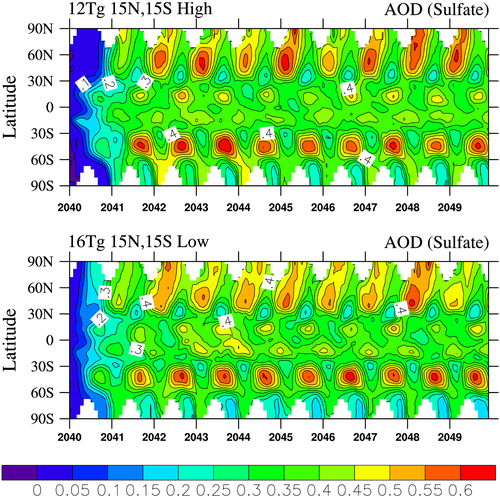
In injection cases, stratospheric temperatures show significant warming of up to 10 and 15°C for the high- and low-altitude injection cases, respectively (Figure 6). The large heating of the lowermost tropical stratosphere is the result of both radiative and adiabatic heating (Richter et al., 2017). The radiative heating change is the result of increased absorption in mostly the LW as well as in the SW component due to increased aerosol mass, and changes in SW due to changes in ozone. Changes in the sum of LW and SW heating are balanced by adiabatic heating, which is proportional to changes in the residual vertical velocity (Richter et al., 2017). The low injection case shows a more confined area of strongly increased temperatures in the tropics as compared to the high injection case. Seasonally dependent statistically significant temperature changes occur in the lower polar stratosphere in NH winter (not shown) and spring (Figure 6, top row), especially for the high-altitude injection case, consistent with a stronger polar jet stream. Furthermore, significant warming occurs in the upper stratosphere high northern latitudes for both cases.
How Does Cloud Seeding Work with Sulfate Aerosols?
Cloud seeding with sulfate aerosols typically involves dispersing the particles into the atmosphere using aircraft or ground-based generators. Once released, the sulfate aerosols act as seeds around which water droplets can form, ultimately leading to the growth of clouds. This process can potentially enhance rainfall in targeted areas and is often used in regions experiencing drought or water shortages.

Disadvantages of Using Sulfate Aerosols in Cloud Seeding
While cloud seeding with sulfate aerosols can have benefits such as increasing rainfall, there are also drawbacks associated with this technique. One of the main disadvantages is the potential increase in temperature that can result from the use of sulfate aerosols. As these particles whiten clouds and increase their reflectivity, more sunlight is reflected back into space, leading to a cooling effect on the Earth’s surface. However, this can also disrupt the natural balance of the atmosphere and result in changes to local and global temperature patterns.
One significant concern is the risk of inadvertently increasing temperature through cloud seeding. As clouds become whiter and more reflective, they can also trap heat within the Earth’s atmosphere, leading to a localized increase in temperature. This warming effect can have negative implications for local ecosystems and climate patterns, offsetting the intended benefits of cloud seeding.
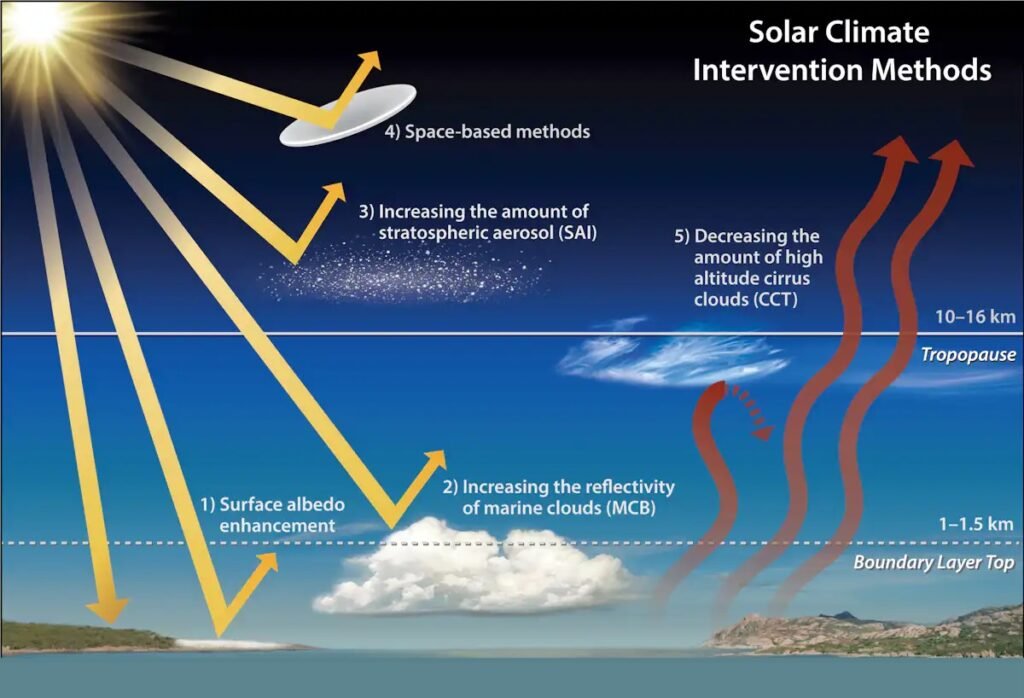
Why Is Stratospheric Aerosol Geoengineering Dangerous?
- Unintended Consequences: One of the major concerns surrounding stratospheric aerosol geoengineering is the potential for unintended consequences. By altering the Earth’s natural systems in such a drastic manner, we risk triggering a chain reaction of unforeseen events that could have devastating effects on the environment and human populations.
- Effect on Weather Patterns: Injecting particles into the stratosphere can disrupt the Earth’s weather patterns, leading to unpredictable changes in rainfall, droughts, and storms. This could have severe implications for agricultural production, water resources, and natural ecosystems.
- Health Risks: The release of sulfur dioxide and other particles into the atmosphere could have detrimental effects on human health. Breathing in these particles can cause respiratory issues, exacerbate existing conditions such as asthma, and contribute to air pollution.
- Geo-Political Ramifications: Stratospheric aerosol geoengineering is a controversial and complex topic that raises questions about international governance, sovereignty, and ethics. Implementing large-scale geoengineering projects without global cooperation and consensus could lead to conflicts and geopolitical tensions.
- Ethical Concerns: There are also ethical considerations surrounding geoengineering, particularly in terms of who gets to make decisions about altering the Earth’s climate. The potential for unequal distribution of benefits and harms, as well as the lack of consent from affected populations, raises serious ethical questions.
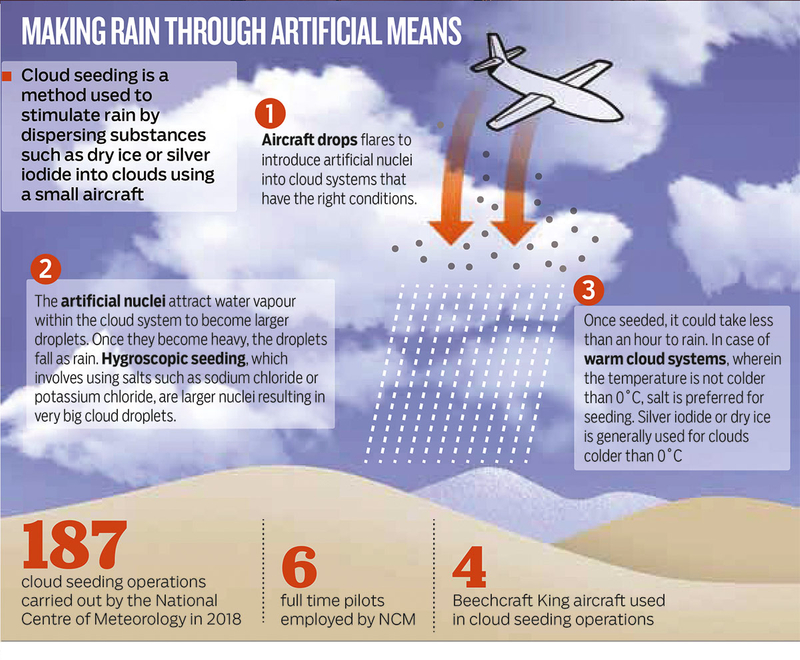
WHAT IS CLOUD SEEDING?
Cloud seeding is a weather-modification system that focuses on the process of inducing rain by introducing chemicals into clouds.
3 CLOUD SEEDING METHODS
1. Static cloud seeding
- It involves spreading a chemical-like silver iodide into clouds. The silver iodide or dry ice is dispersed into the clouds and provides a crystal around which moisture can condense around. Silver iodide essentially makes rain clouds more effective at dispensing their water.
2. Dynamic Cloud Seeding
- This method of cloud seeding aims to boost vertical air currents, which encourages more water to pass through the clouds, resulting in more rain. Compared to the static method, dynamic cloud seeding requires up to 100 times more ice crystals, making it not only more complex but also less dependable than its other counterpart.
3. Hygroscopic Cloud Seeding
- This technique involves the dispersion of salts through flares or explosives in the lower portions of clouds. As water joins with them, the salt grows in size. Although hygroscopic cloud seeding holds much promise, it would still require further research.
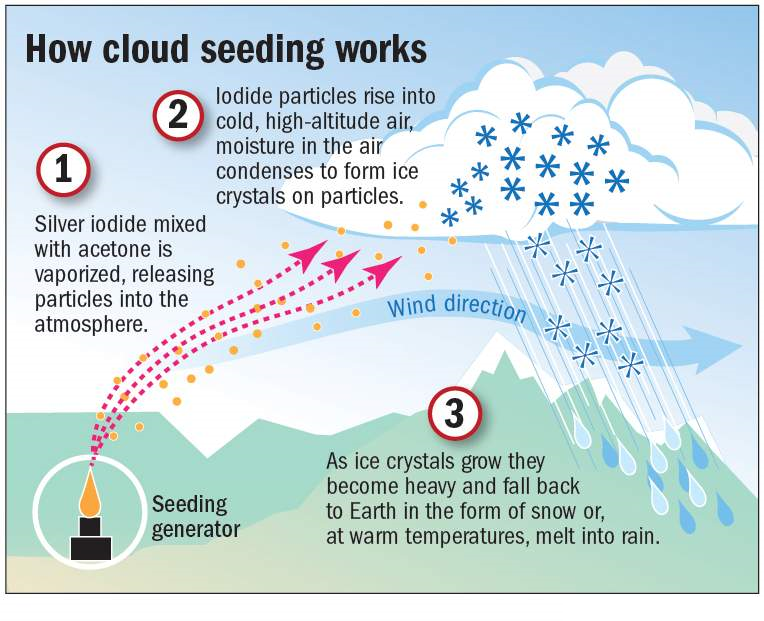
WHAT ARE THE DISPERSAL METHODS
The silver iodide or dry ice can be delivered by:
a) Airplane flares
Flares mounted on airplane wings spray the chemicals across clouds
b) Rocket
Rockets are launched into the clouds and release the chemicals
c) Generator
Silver iodide is sprayed into a propane flame, which is then transported by the heat and wind.

Mumbai: Rocket for cloud seeding successfully fired in dry zone
Ref: https://economictimes.indiatimes.com/news/science/Rocket-for-cloud-seeding-successfully-fired-in-dry-zone-to-bring-rain-to-drought-hit-Saigaon/articleshow/48512468.cms
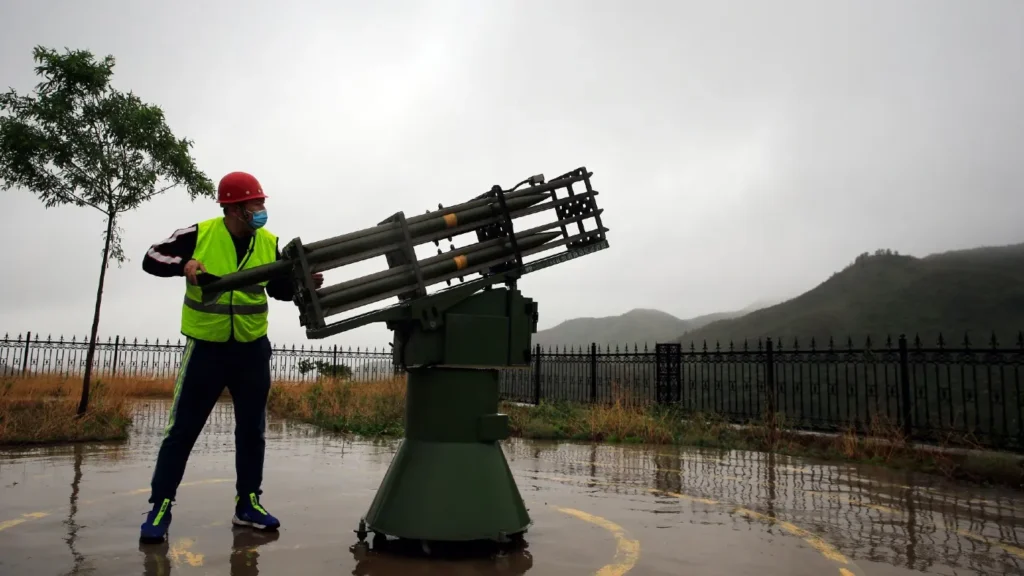
These activities are already being carried out in over 50 countries, as reported by the World Meteorological Organization.
The technology is generally divided into three categories with distinct objectives: fertilizing the ocean to enhance its carbon uptake; brightening clouds or ice to reflect more sunlight back into space and thus mitigate global or local warming; or the most common technology – as observed in agricultural communities or ski resorts – of injecting aerosols into the stratosphere to increase rainfall or snow, or to modify a storm.
Even though people argue about it, silver iodide is still the most popular substance known for making ice. But using it can harm the environment because it is poisonous to land and water animals.
STOP GEOENGINEERING!
Source: National Centre of Meterology-Image, Doc2us, Foreignpolicy-image, Skynews, CNN-Image
Also Read:
